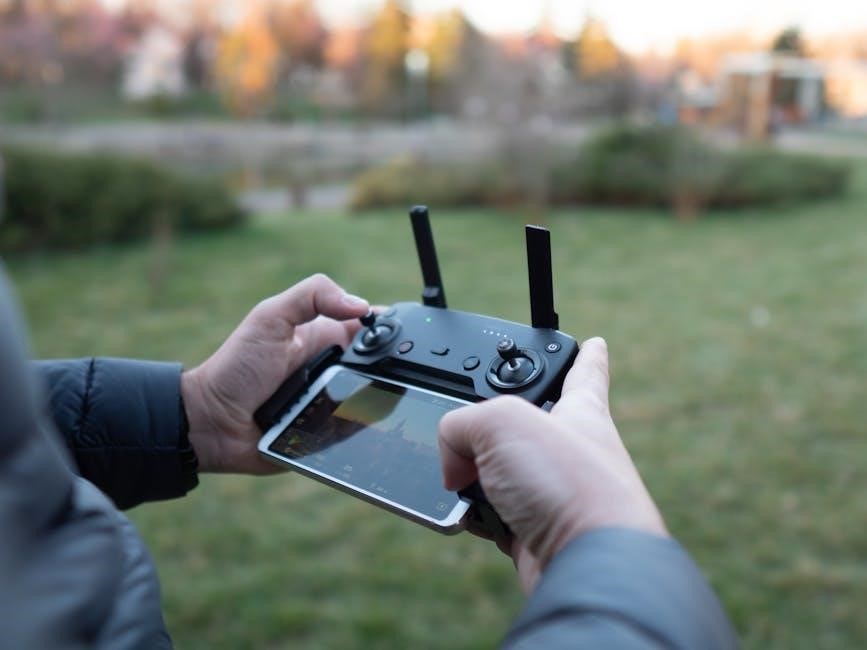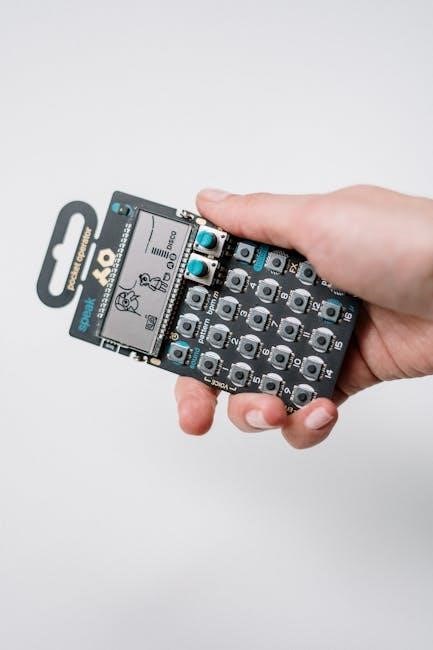troy bilt tb554 edger manual
Category : Manuals
Safety Precautions
Always read and understand the safety rules before operating. Wear protective gear like gloves and goggles. Ensure the edger is free from damage. Keep children and pets away while in use.
1.1. General Safety Rules
Read and fully understand the operator’s manual before using the edger. Familiarize yourself with the machine’s components and controls. Always wear protective gear, including gloves, safety goggles, and sturdy footwear. Ensure the edger is in good working condition before operation. Keep loose clothing and long hair tied back to avoid entanglement. Never operate the edger near children or pets. Ensure the work area is clear of debris and obstacles. Avoid using the edger in wet conditions or during poor visibility. Always follow proper starting and stopping procedures. Store the edger in a dry, secure location when not in use. Keep the blade and moving parts away from body contact. Follow all safety guidelines to minimize risks of injury or damage.
- Ensure all guards and safety features are in place.
- Never leave the edger unattended while it is running.
- Keep the work area well-ventilated to avoid inhaling dust or fumes.
- Avoid overreaching or stretching while operating the edger.
1.2. Warning Labels and Symbols
The Troy-Bilt TB554 Edger features essential warning labels and symbols to ensure safe operation. These labels are strategically placed on the machine to alert users of potential hazards. Common symbols include a rotating blade warning and indicators for proper handling. Always locate and understand these labels before operation. They provide critical information about safe practices and potential risks. Ignoring these warnings can lead to serious injury or damage. Familiarize yourself with each symbol’s meaning, as outlined in the operator’s manual. Adhering to these warnings ensures a safer operating experience. Regularly inspect the labels for clarity and integrity, replacing any damaged or worn labels immediately. Follow all visual and textual instructions to maintain safety standards while using the edger.
- Locate and interpret all warning labels before use.
- Understand the meaning of each symbol provided.
- Replace any worn or damaged warning labels.
- Never ignore safety warnings to prevent accidents.
1.3. Protective Gear Recommendations
Wearing appropriate protective gear is crucial when operating the Troy-Bilt TB554 Edger. Always wear long pants, sturdy shoes, and gloves to protect your hands from cuts and abrasions. Safety goggles or protective eyewear are essential to shield your eyes from debris. A dust mask is recommended to avoid inhaling dust and grass clippings. Hearing protection, such as earplugs, is also advised to prevent noise-induced hearing damage. Ensure all loose clothing or jewelry is secured to avoid entanglement with moving parts. By following these recommendations, you can minimize risks and maintain a safe working environment while using the edger.
- Wear long pants and sturdy, closed-toe shoes.
- Use gloves to protect your hands.
- Wear safety goggles or protective eyewear;
- Consider a dust mask and hearing protection.
- Secure loose clothing and jewelry.

Assembly Instructions
Begin by unpacking and inventorying all parts. Follow the manual for blade assembly, handle installation, and guard setup. Ensure all components are securely tightened before use.
2.1. Unpacking and Inventory
Start by carefully unpacking the Troy-Bilt TB554 edger from its box. Inspect all components for damage. Check the inventory list to ensure all parts are included, such as the blade, handle, guard, and hardware. Compare each item with the manual’s parts diagram to confirm completeness. If any parts are missing or damaged, contact the manufacturer immediately. Organize the components in a clean, dry workspace to facilitate assembly. Pay special attention to small hardware like screws and bolts, which can easily be misplaced. Once everything is accounted for, proceed to the next step in the assembly process.
2.2. Blade Assembly and Installation
Attach the blade to the spindle using the provided hardware. Tighten the bolts firmly with a wrench, ensuring the blade is secure but avoiding over-tightening. Refer to the parts diagram for correct orientation. Ensure the blade rotates freely without touching the guard. Proper alignment is crucial for even cutting performance. Handle the blade with care, as it is sharp. Wear gloves during installation to prevent injury. Once installed, manually rotate the blade to confirm smooth movement and ensure no obstructions. Double-check all connections before proceeding to the next step in the assembly process.
2.3. Handle and Guard Setup

Attach the handle to the edger by aligning the mounting holes and securing it with the provided bolts. Tighten firmly but avoid over-tightening. Adjust the handle height to a comfortable position for easy maneuverability. Next, install the guard by aligning it with the edge guide and securing it with screws. Ensure the guard is properly fitted to prevent debris from being thrown during operation. Double-check all connections to confirm stability. After installation, inspect the handle and guard for alignment and proper fit. Ensure the handle is securely locked in place and the guard is functioning as intended. This setup ensures safe and efficient edging operations. Recheck all bolts and screws for tightness before use.

Operating the Troy-Bilt TB554 Edger
Start the engine by priming the bulb and pulling the starter rope. Engage the blade with the control lever. Adjust the depth knob for desired cutting height. Maintain steady movement for even results, keeping hands and feet away from the blade. Turn off the engine and let it cool before storing. Always wear safety goggles and gloves. Keep children and pets away during operation. Regularly inspect the blade for damage and clean debris after use. Refer to the manual for specific maintenance tips to prolong the edger’s lifespan. Practice different edging techniques, such as straight lines or curved edges, to achieve professional-looking results. Ensure all safety precautions are followed to prevent accidents and ensure efficient operation. Proper handling and care will help maintain the edger’s performance and longevity. Always follow the manufacturer’s guidelines for optimal results.
3.1. Starting the Engine
Starting the engine requires careful preparation. First, ensure the edger is on a level surface and the blade control lever is disengaged. Prime the engine by squeezing the primer bulb 2-3 times until it feels firm. Next, pull the starter rope gently until resistance is felt, then give a quick, firm pull to start the engine. Allow the engine to warm up for a few seconds before engaging the blade. Always wear safety goggles and keep loose clothing tied back. If the engine is difficult to start, check the air filter and fuel level. Refer to the troubleshooting section for persistent issues. Never touch the blade while the engine is running. Keep children and pets away during startup and operation. Proper starting ensures safe and efficient performance. Follow these steps carefully to avoid accidents and maintain optimal functionality.
3.2. Basic Edging Techniques
Mastering basic edging techniques ensures clean, precise cuts. Stand comfortably with a firm grip on the handle, keeping the edger at a slight angle. Align the blade with the edge of the lawn or pavement. Start the engine and slowly lower the blade to the desired cutting depth. Move the edger steadily along the edge, maintaining consistent pressure. Use short, controlled strokes for curved areas and longer strokes for straight edges. Avoid applying too much pressure, as this can damage the blade or the surface. Keep the area clear of debris and obstructions. For optimal results, edge in one continuous motion, following the natural contour of the lawn or path. Regular practice will improve your technique and ensure professional-looking results. Always maintain control and visibility while edging. Proper technique enhances safety and efficiency. Keep the blade sharp for cleaner cuts. Adjust the blade depth as needed for different surfaces. Follow these steps for precise, professional-looking edges every time.
3.3. Adjusting the Cutting Depth
To adjust the cutting depth on your Troy-Bilt TB554 edger, start by locating the depth adjustment knob or lever, typically found near the blade housing. Turn off the engine and allow the blade to stop completely before making any adjustments. Turn the knob or move the lever to raise or lower the blade to the desired cutting height. Be careful not to over-tighten or force the mechanism. Once set, test the depth on a small, inconspicuous area to ensure it meets your needs. Proper adjustment ensures even cutting and prevents damage to the blade or surrounding surfaces. Always refer to the manual for specific instructions, as improper adjustment can affect performance. Adjusting the cutting depth correctly enhances both safety and efficiency during edging tasks.

Maintenance and Care
Regularly clean the edger, sharpen or replace the blade, and check lubrication levels. Proper maintenance ensures optimal performance and extends the life of your Troy-Bilt TB554 edger.
4.1. Routine Cleaning
Regular cleaning is essential for maintaining the performance of your Troy-Bilt TB554 edger. Start by turning off the engine and allowing it to cool. Remove any debris or grass clippings from the blade and housing using a soft-bristle brush or cloth. Check the air filter and clean or replace it as needed to ensure proper airflow. Wipe down the handle and controls with a damp cloth to prevent dirt buildup. For tougher dirt, mix a mild detergent with water and apply it gently before rinsing and drying thoroughly. Always refer to the manual for specific cleaning guidelines to avoid damaging components.
4.2. Blade Sharpening and Replacement
Sharpen the blade regularly to maintain cutting efficiency. Inspect it for wear or damage and sharpen using a file or grinder, ensuring the original angle is preserved. If the blade is excessively worn or bent, replace it with a genuine Troy-Bilt part. To replace, disconnect the spark plug, remove the bolts securing the blade, and install the new one. Tighten the bolts to the specified torque to prevent vibration. Always wear gloves and safety glasses during this process. Sharpening and replacing the blade ensures optimal performance and safety. Refer to the manual for precise instructions and torque specifications to avoid damage to the edger.
4.3. Lubrication and Oil Checks
Regular lubrication and oil checks are essential for maintaining the Troy-Bilt TB554 edger’s performance. Check the engine oil level before each use, using the dipstick. Use the recommended oil type specified in the manual. Lubricate moving parts, such as the blade spindle and drive components, with a high-quality grease. Ensure all bolts and nuts are tightened to the recommended torque. Proper lubrication prevents excessive wear and tear, ensuring smooth operation. Always refer to the manual for specific instructions and oil recommendations. Regular maintenance extends the lifespan of your edger and ensures reliable performance. Keep track of maintenance intervals to avoid engine damage.

Troubleshooting Common Issues
Address issues like engine starting problems, excessive vibration, or uneven cutting. Refer to specific subsections for detailed solutions and step-by-step guidance to resolve these common concerns effectively.
5.1. Difficulty Starting the Engine
If the engine is hard to start, check for common issues like old or stale fuel, a faulty spark plug, or a clogged air filter. Ensure the fuel tank is filled with fresh gasoline, and the choke is properly adjusted. Clean or replace the air filter if it’s dirty. Inspect the spark plug for wear or fouling and replace it if necessary. Additionally, check the fuel line for blockages or damage. If the problem persists, consult the troubleshooting guide or contact an authorized service dealer for assistance. Regular maintenance, such as cleaning the carburetor and checking the ignition system, can help prevent starting issues.
5.2. Excessive Vibration
Excessive vibration can be caused by a damaged or bent blade, an unbalanced blade spindle, or a loose drive belt. Inspect the edger blade for damage and replace it if necessary. Check the spindle for bending or wear and contact a service dealer if repairs are needed. Ensure all bolts and screws are tightened properly. If the drive belt is loose or worn, adjust or replace it according to the manual. Vibration can also result from uneven cutting techniques, so maintain steady control during operation. Regular maintenance, such as balancing the blade and lubricating moving parts, helps reduce vibration and ensures smooth performance. Always refer to the troubleshooting guide for specific solutions.
5.3. Uneven Cutting Performance
Uneven cutting performance can result from a dull or damaged blade, incorrect cutting depth, or improper technique. Inspect the blade for wear or damage and sharpen or replace it as needed. Ensure the cutting depth is set correctly for the task, avoiding excessive pressure that could strain the engine. Maintain a steady, consistent pace while edging to achieve even results. If the issue persists, check for debris buildup on the blade or in the edger’s chute, and clean thoroughly. Regular maintenance, such as blade sharpening and proper edger alignment, helps prevent uneven cuts. Adjust the blade spindle if misaligned, and consult the manual for specific calibration instructions to restore optimal performance.

Parts and Accessories
Explore genuine Troy-Bilt parts like replacement blades, drive belts, and pulleys. Visit authorized dealers or the official website for authentic accessories tailored to your TB554 edger.
6.1. Replacement Blade Options
Genuine Troy-Bilt replacement blades are specifically designed for the TB554 edger, ensuring optimal performance and safety. These blades are crafted from durable materials to withstand regular use and maintain sharpness. For longevity, blades are often made from high-carbon steel, providing clean cuts and resisting wear. When replacing, always use Troy-Bilt authorized parts to ensure compatibility and avoid potential damage. Refer to the parts list in your manual for the correct blade specifications. Ordering replacement blades is convenient through authorized dealers or the official Troy-Bilt website. Proper installation is crucial; consult the manual or contact customer support for guidance. Regular blade maintenance enhances edging results and extends tool life.
6.2. Drive Belt and Pulley Systems
The drive belt and pulley system on the Troy-Bilt TB554 edger is essential for transferring power from the engine to the blade. Regular inspection is crucial to ensure proper function. Look for signs of wear, such as cracks, fraying, or misalignment. Replace the drive belt if damaged, as a malfunction can cause uneven cutting or complete stoppage. Use only genuine Troy-Bilt replacement belts to maintain performance and durability. The pulley system should also be checked for alignment and cleanliness. Lubricate pulleys as recommended to prevent excessive wear. If issues persist, consult the manual or contact an authorized service dealer for professional assistance. Proper maintenance ensures smooth operation and extends the life of your edger.
6.3. Authorized Service Dealers
For professional repairs and maintenance, contact authorized Troy-Bilt service dealers. These dealers are trained to handle specific issues with the TB554 edger, ensuring quality service. Locate them through the official Troy-Bilt website or customer support. Using authorized dealers guarantees genuine parts and compliance with warranty terms. They can address complex problems like blade spindle damage or drive belt malfunctions. Always verify the dealer’s authorization to avoid unauthorized services. Contacting an authorized dealer ensures your edger is repaired correctly, maintaining its performance and longevity. For a reliable and trusted service experience, rely on Troy-Bilt’s authorized network. This ensures your edger operates safely and efficiently, adhering to manufacturer standards and extending its lifespan.

Warranty Information
The Troy-Bilt TB554 edger is covered under a limited warranty for defects in materials and workmanship. Register your product to validate warranty coverage. Refer to the manual for details.
7.1. Coverage Details
The warranty for the Troy-Bilt TB554 edger covers defects in materials and workmanship under normal use. The standard warranty period typically lasts for a specified number of years from the date of purchase. This coverage includes repair or replacement of defective parts at no additional cost to the user. However, the warranty does not extend to damage caused by misuse, improper maintenance, or accidental damage. It is essential to register the product and retain the purchase receipt to validate the warranty. For precise details, including the duration and specific terms, refer to the official warranty documentation provided with the product or available on the manufacturer’s website.
7.2. Filing a Warranty Claim
To file a warranty claim for your Troy-Bilt TB554 edger, contact an authorized service dealer with proof of purchase and a detailed description of the issue. Ensure the product is properly registered. The dealer will assess the claim and coordinate repairs or replacements. For assistance, visit the official Troy-Bilt website or call customer support. Keep all documentation handy to expedite the process and ensure coverage under the warranty terms.
7.3. Exclusions and Limitations
The warranty does not cover damage caused by misuse, neglect, or improper maintenance. It excludes wear and tear from normal use, as well as issues arising from unauthorized modifications. Problems caused by failure to follow the operator’s manual are not covered. The warranty is void if the edger is used for commercial purposes or in a manner inconsistent with its intended design. Coverage also excludes damage from accidents, natural disasters, or external environmental factors. The warranty period is limited and varies by product and region. For specific details, refer to the warranty section in the manual or contact Troy-Bilt customer support.

Additional Resources
For additional support, visit Troy-Bilt’s official website for manuals, video tutorials, and troubleshooting guides. Contact customer support for assistance or to find authorized service dealers near you.
8.1. Online Manuals and Guides
Access comprehensive online manuals and guides for the Troy-Bilt TB554 edger through the official Troy-Bilt website. These resources include detailed operation instructions, troubleshooting tips, and maintenance schedules. You can download a free PDF version of the operator’s manual by providing your model and serial number. Additionally, video tutorials and demo clips are available to assist with assembly, maintenance, and repair. These resources ensure you have all the information needed to operate and maintain your edger effectively. Visit Troy-Bilt’s official website to explore these resources and keep your edger in optimal condition.
8.2. Video Tutorials and Demos
Enhance your understanding of the Troy-Bilt TB554 edger with video tutorials and demos available on Troy-Bilt’s official website and YouTube channel. These videos provide step-by-step guidance on assembly, maintenance, and troubleshooting. Watch demonstrations on proper edging techniques, blade replacement, and engine starting. Additionally, tutorials cover routine tasks like sharpening blades and lubricating moving parts. These visual resources are designed to help you maximize the performance and longevity of your edger. Visit the Troy-Bilt website or their official YouTube channel to access these helpful videos and ensure you’re using your edger safely and effectively.

8.3. Customer Support Contact
For assistance with your Troy-Bilt TB554 edger, contact customer support at Troy-Bilt’s official website. Call their support team at 1-800-828-5500, available Monday-Friday, 8am-5pm EST. Email inquiries can also be submitted through their website. Representatives are ready to help with troubleshooting, maintenance tips, or warranty-related questions. Visit the “Support” section on their website for additional resources, including FAQs, repair centers, and live chat options. Ensure to have your model and serial number handy for efficient service. Troy-Bilt’s customer support team is committed to providing reliable assistance to keep your edger performing at its best.





























